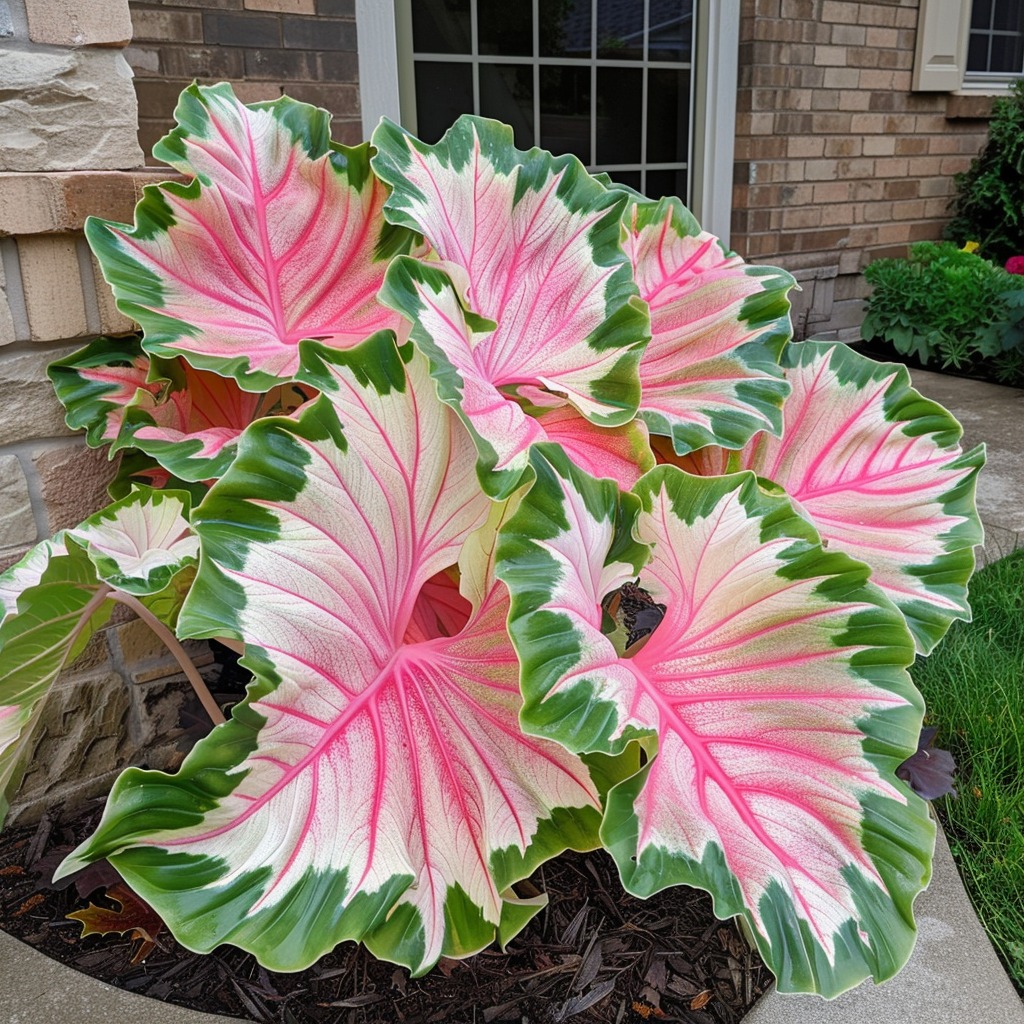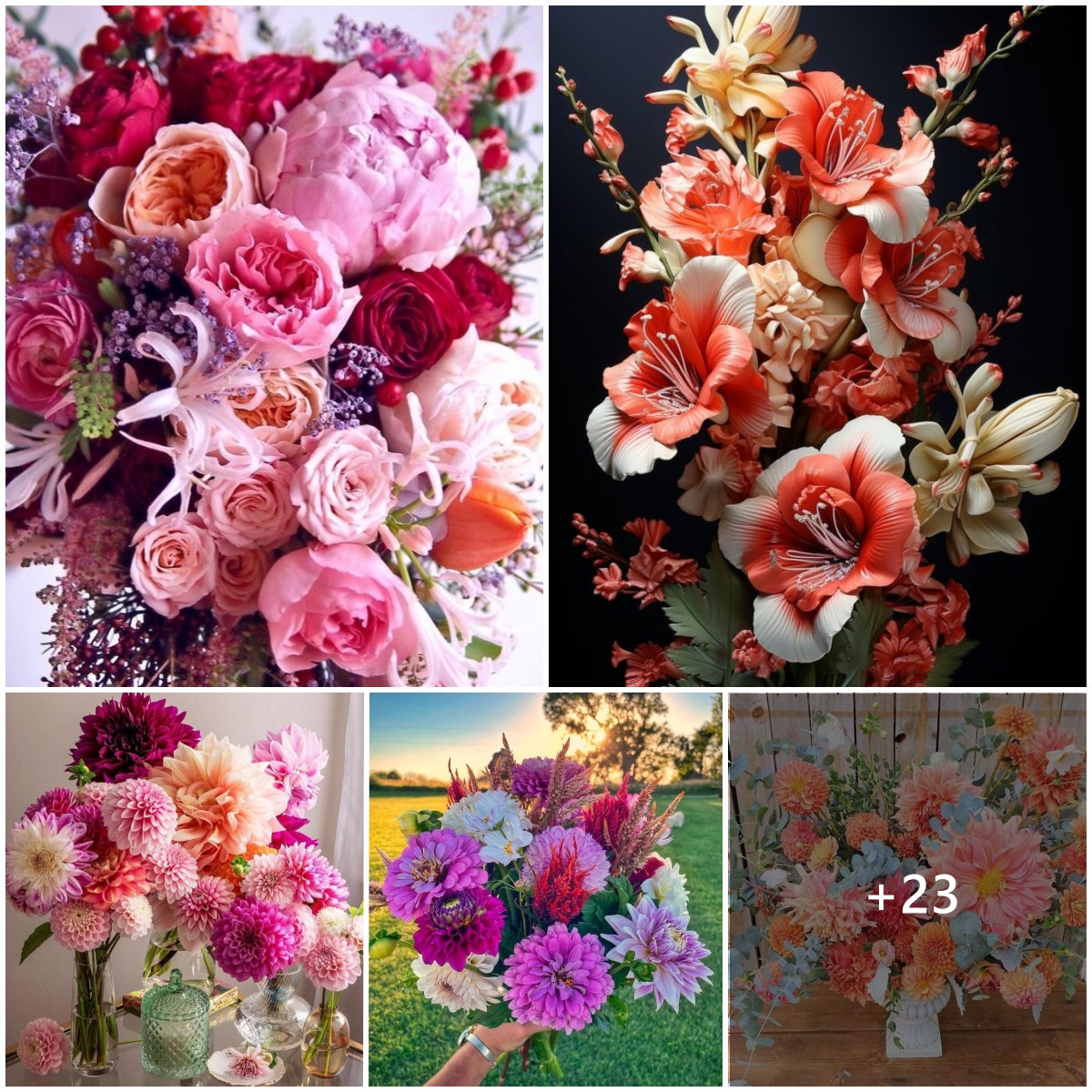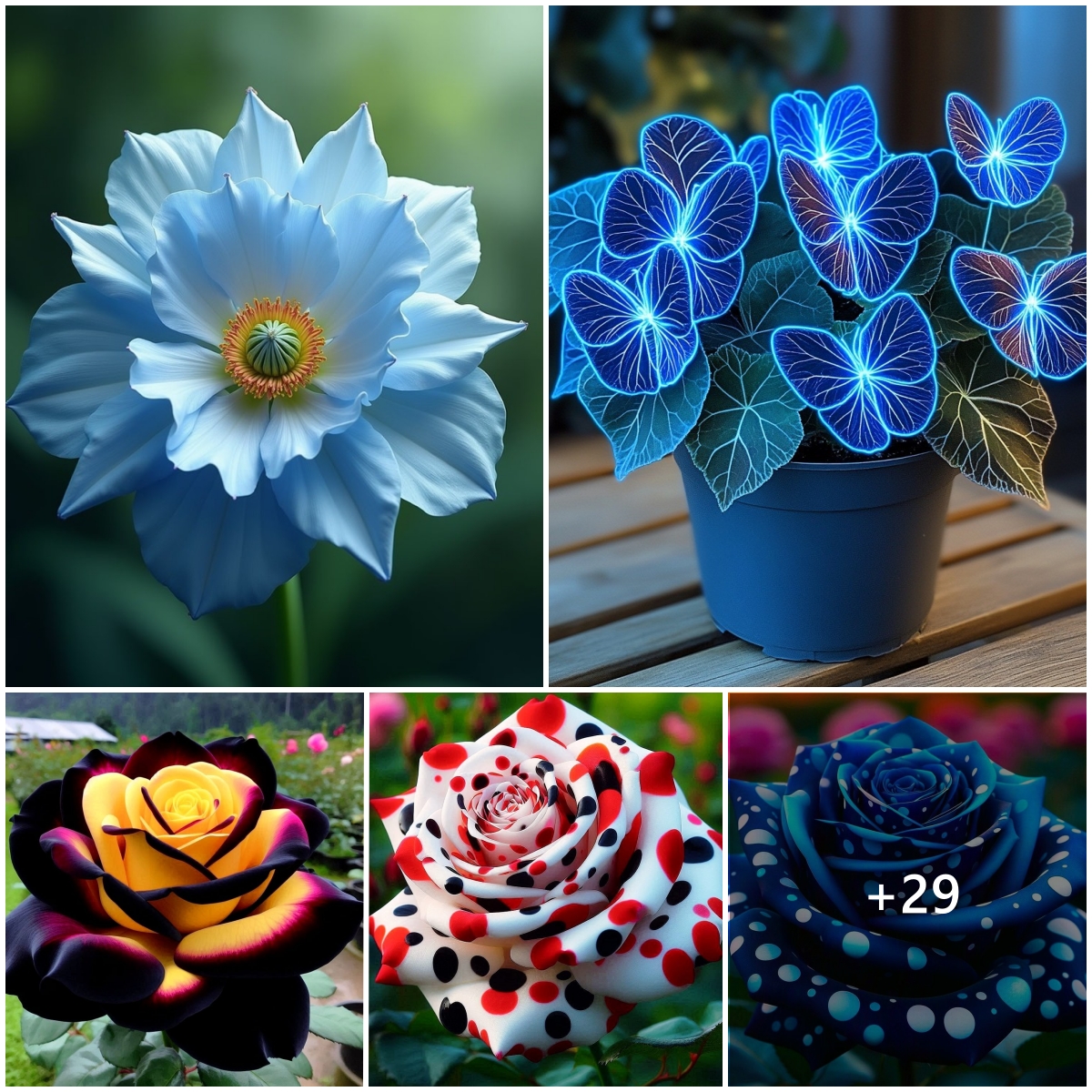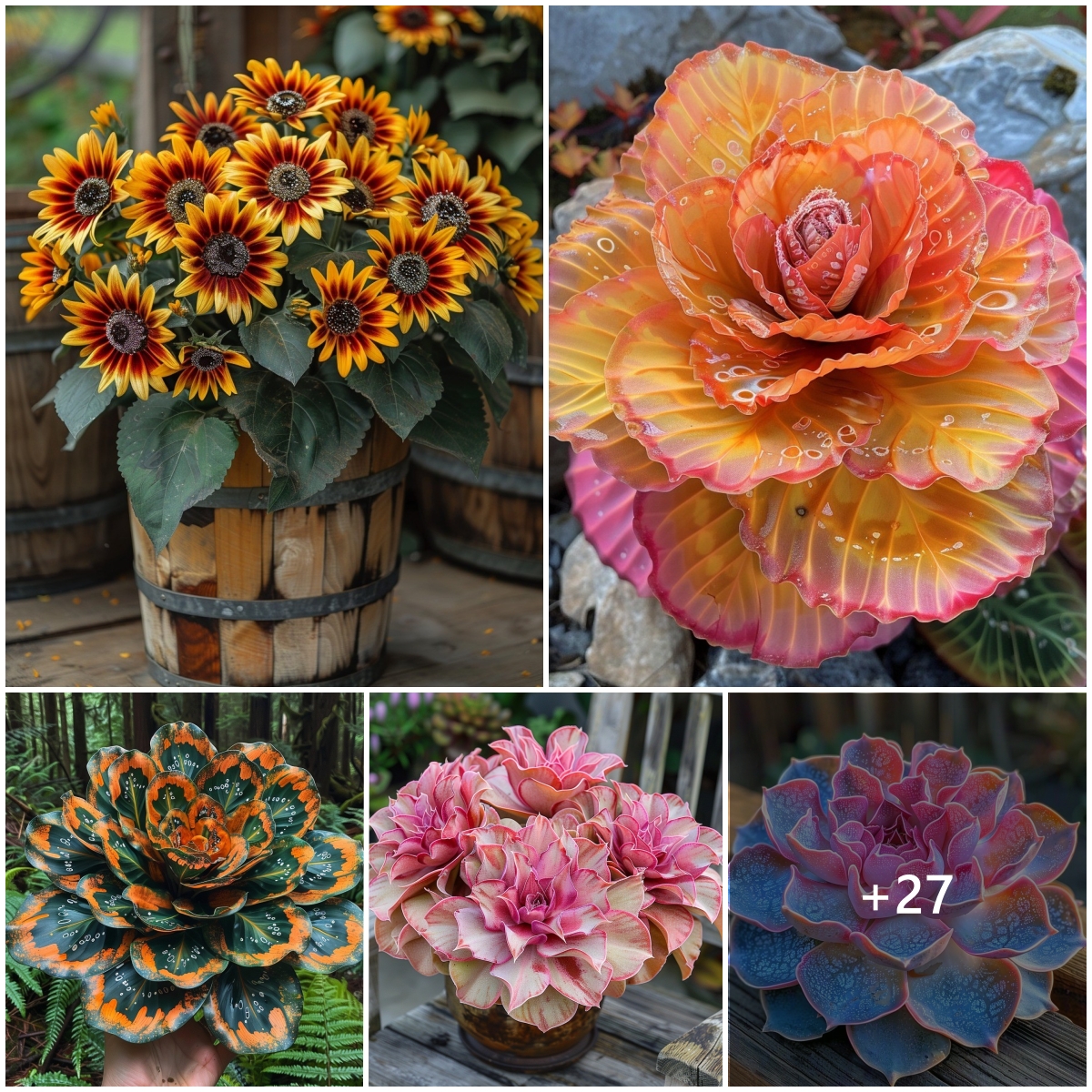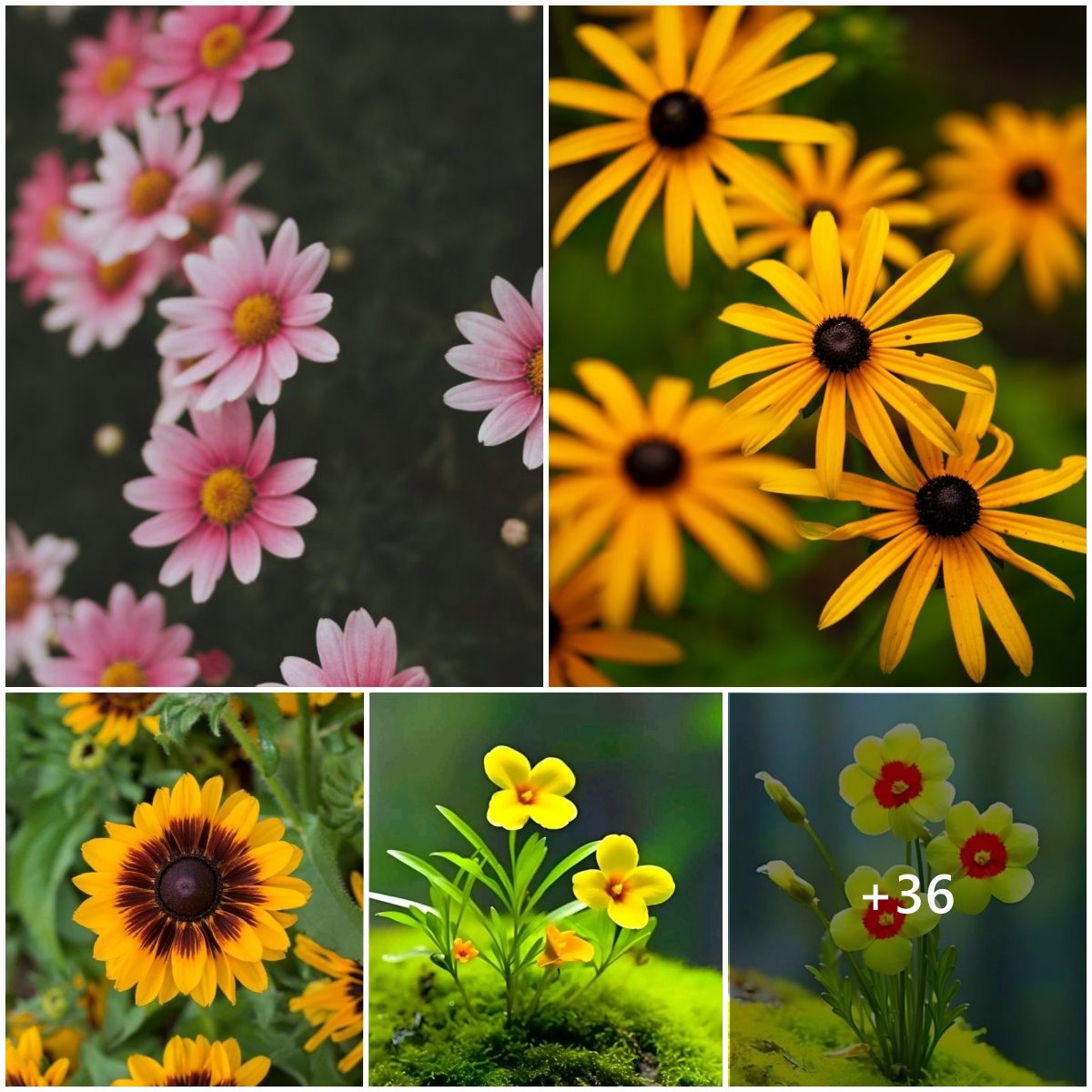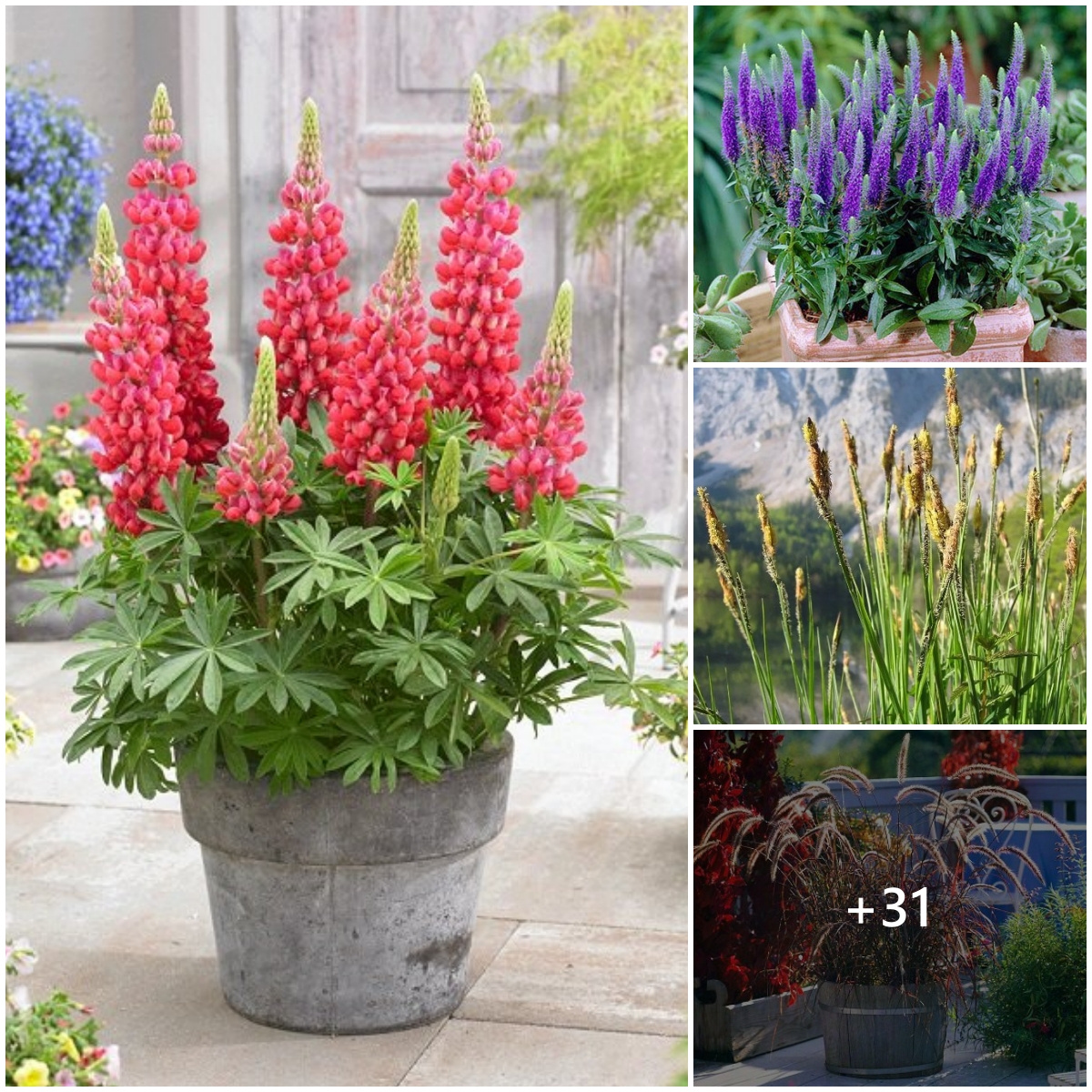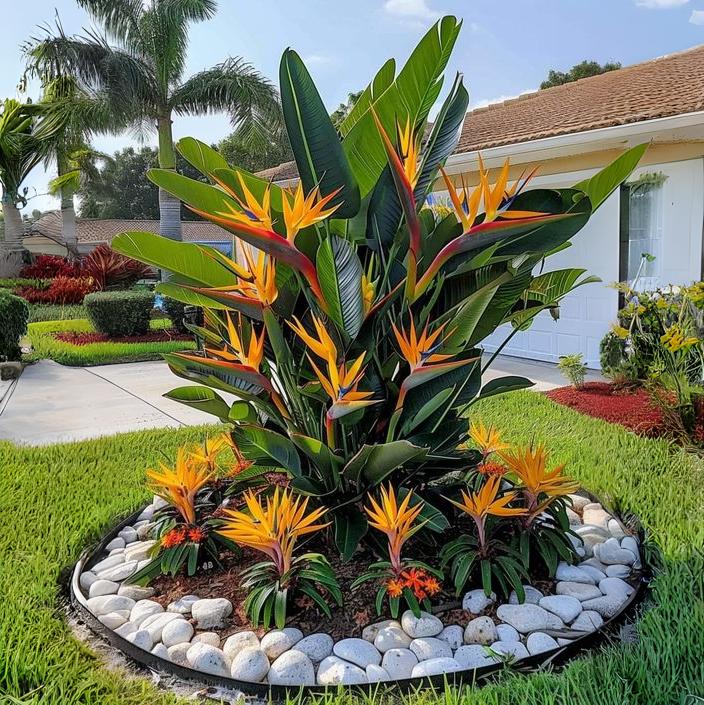
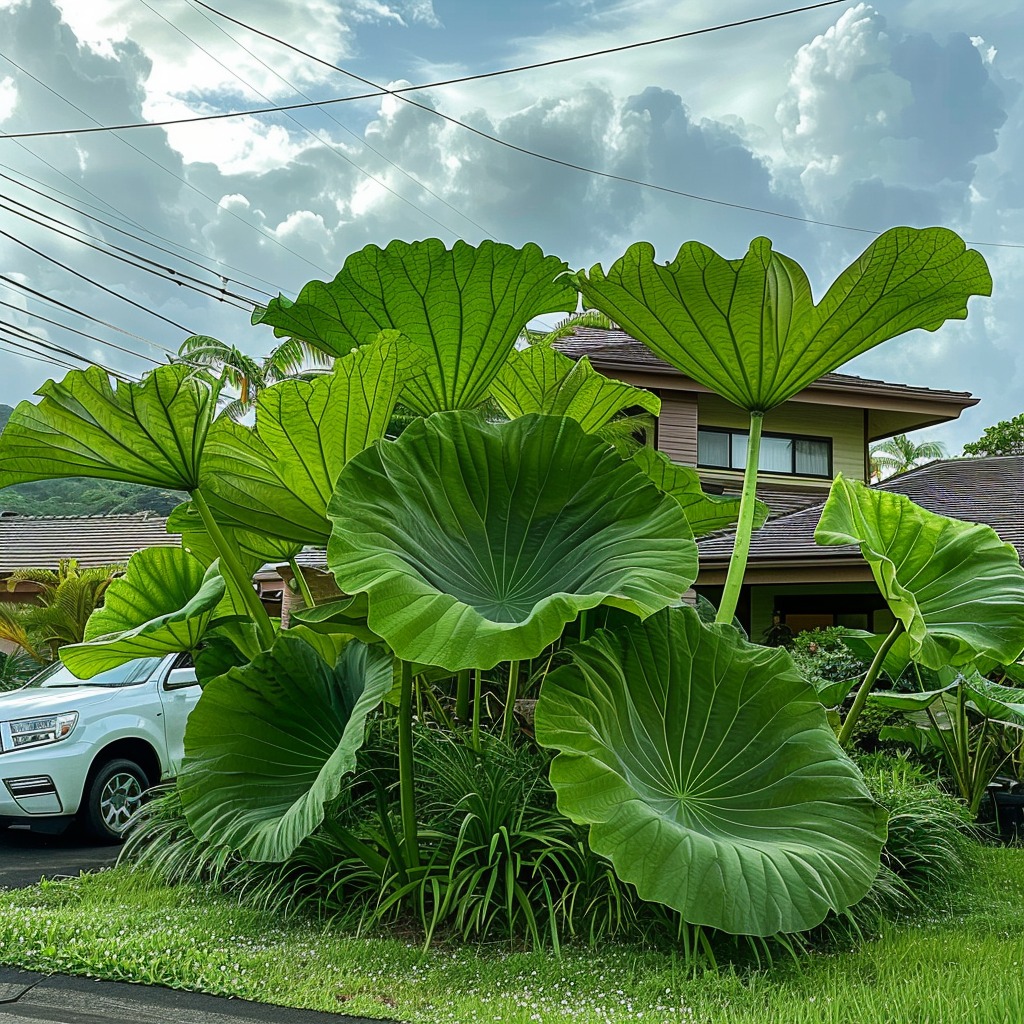
Elephant Ear ‘Giant Green’Massive, lush green leaves towering over garden landscapes, creating a tropical oasis with their dramatic presence.Plant care guide:Light: Partial to full shade.Water: Keep the soil consistently moist but not waterlogged.Soil: Rich, well-draining soil with organic matter.Temp: 60-85°F (16-29°C).Humidity: Moderate to high.
Organic fertilizers:Fertilize monthly with a high-nitrogen fertilizer during the growing season.
Garden decoration ideas:Ideal for creating a bold, lush backdrop in large garden beds or as a stunning focal point in tropical-themed landscapes.

Elephant Ear ‘Pastel Dreams’A vibrant display of pastel-colored leaves in shades of pink, blue, and green, creating a mesmerizing focal point in any garden.
Plant care guide:Light: Bright, indirect light.Water: Allow the top inch of soil to dry out between waterings.Soil: Well-draining, rich potting mix.Temp: 65-75°F (18-24°C).Humidity: High.

Elephant Ear ‘Tropical Flame’A striking blend of vibrant orange and cream leaves with deep red veining, creating a bold statement in any garden setting.Plant care guide:Light: Bright, indirect light.Water: Keep soil consistently moist but not waterlogged.Soil: Rich, well-draining potting mix.Temp: 65-80°F (18-27°C).Humidity: High.Organic fertilizers:Fertilize every two weeks during the growing season with a balanced liquid fertilizer.Garden decoration ideas:Perfect for adding a tropical flair to garden borders or as a dramatic potted plant for patios.
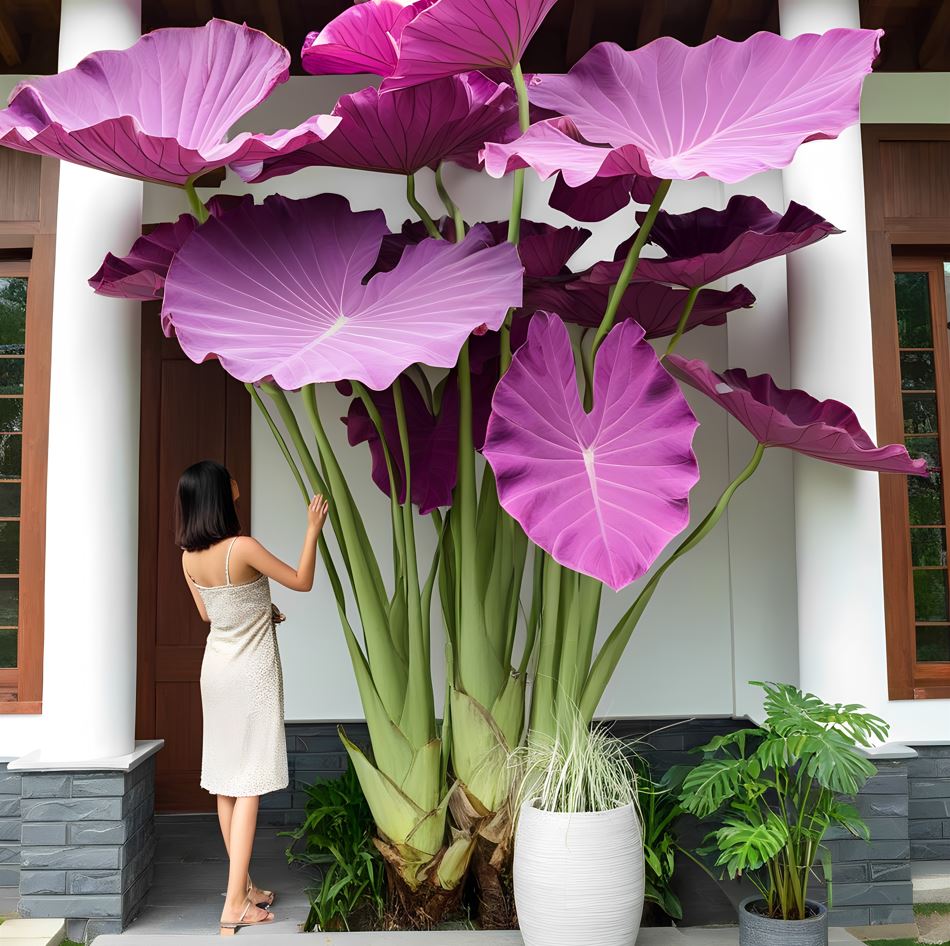
Elephant Ear Tips for Beginners
For those new to the world of elephant ear plants, getting started can seem daunting. However, with a few key tips and tricks, even novice gardeners can successfully grow these impressive specimens. This section will cover the fundamental aspects of elephant ear care, providing a solid foundation for cultivating healthy, thriving plants.
Choosing the Right Location
When it comes to elephant ear plants, location is crucial. These tropical plants thrive in environments that mimic their native habitats, so selecting the right spot is the first step towards success.
Outdoors, elephant ears prefer partial shade or dappled sunlight. While they can tolerate full sun in some cases, they often perform better with some protection from intense afternoon rays. Look for a spot that receives morning sun and afternoon shade, or an area beneath tall trees that provide filtered light throughout the day.
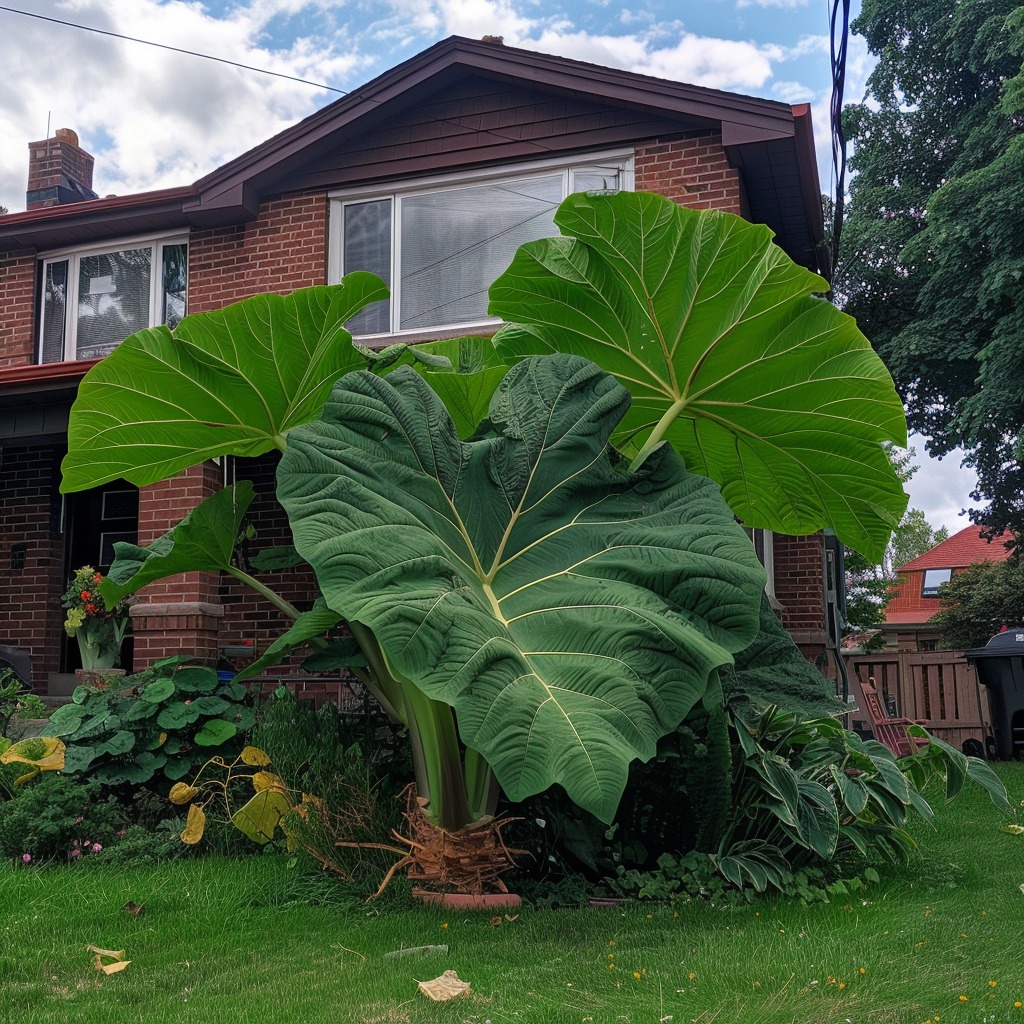
Indoors, place your elephant ear near a bright window, but avoid direct sunlight which can scorch the leaves. East or north-facing windows often provide ideal light conditions. If you’re growing elephant ears in a room with limited natural light, consider supplementing with artificial grow lights to ensure the plant receives enough illumination.
Preparing the Soil
Elephant ears are heavy feeders that require rich, well-draining soil to thrive. Whether you’re planting in the ground or in containers, soil preparation is key to long-term success.
For outdoor planting, start by amending your garden soil with plenty of organic matter. Compost, well-rotted manure, or leaf mold can all help improve soil structure and fertility. Aim for a soil pH between 5.5 and 7.0, which is slightly acidic to neutral. If your soil is heavy clay, consider mixing in some sand or perlite to improve drainage.
When potting elephant ears, use a high-quality potting mix formulated for tropical plants. These mixes often contain a blend of peat moss, perlite, and vermiculite, which provides both moisture retention and good drainage. You can further enrich the potting mix by adding a slow-release fertilizer or organic compost.
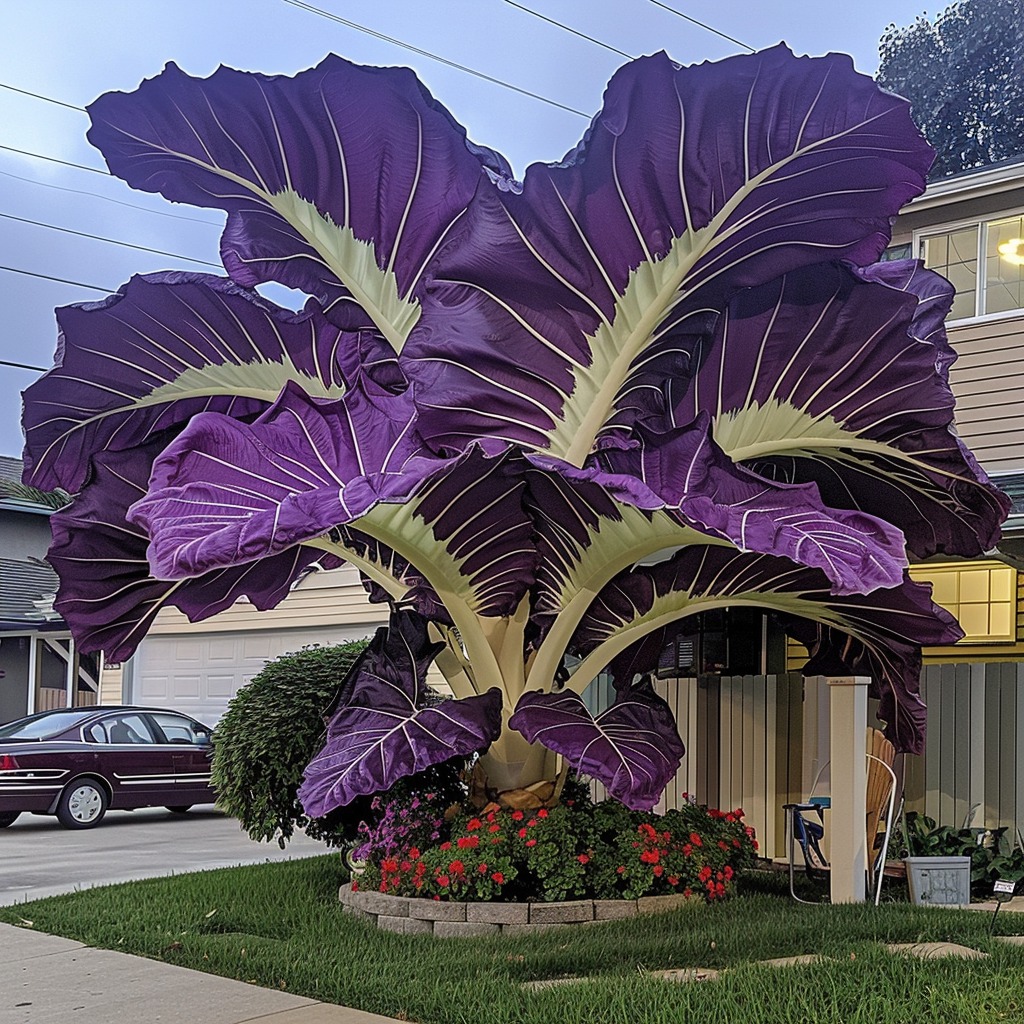
Watering Wisely
Proper watering is perhaps the most critical aspect of elephant ear care. These plants have high water requirements and prefer consistently moist soil. However, it’s important to strike a balance – while they love moisture, they don’t tolerate waterlogged conditions well.
Water your elephant ears deeply and regularly, especially during hot, dry periods. In outdoor gardens, aim to provide about 2-3 inches of water per week, either from rainfall or irrigation. Container-grown plants may need daily watering, especially in warm weather or if placed in a sunny spot.
To determine when to water, check the top inch of soil. If it feels dry to the touch, it’s time to water. Use a moisture meter for more accurate readings, especially for potted plants. Always ensure that excess water can drain freely to prevent root rot.
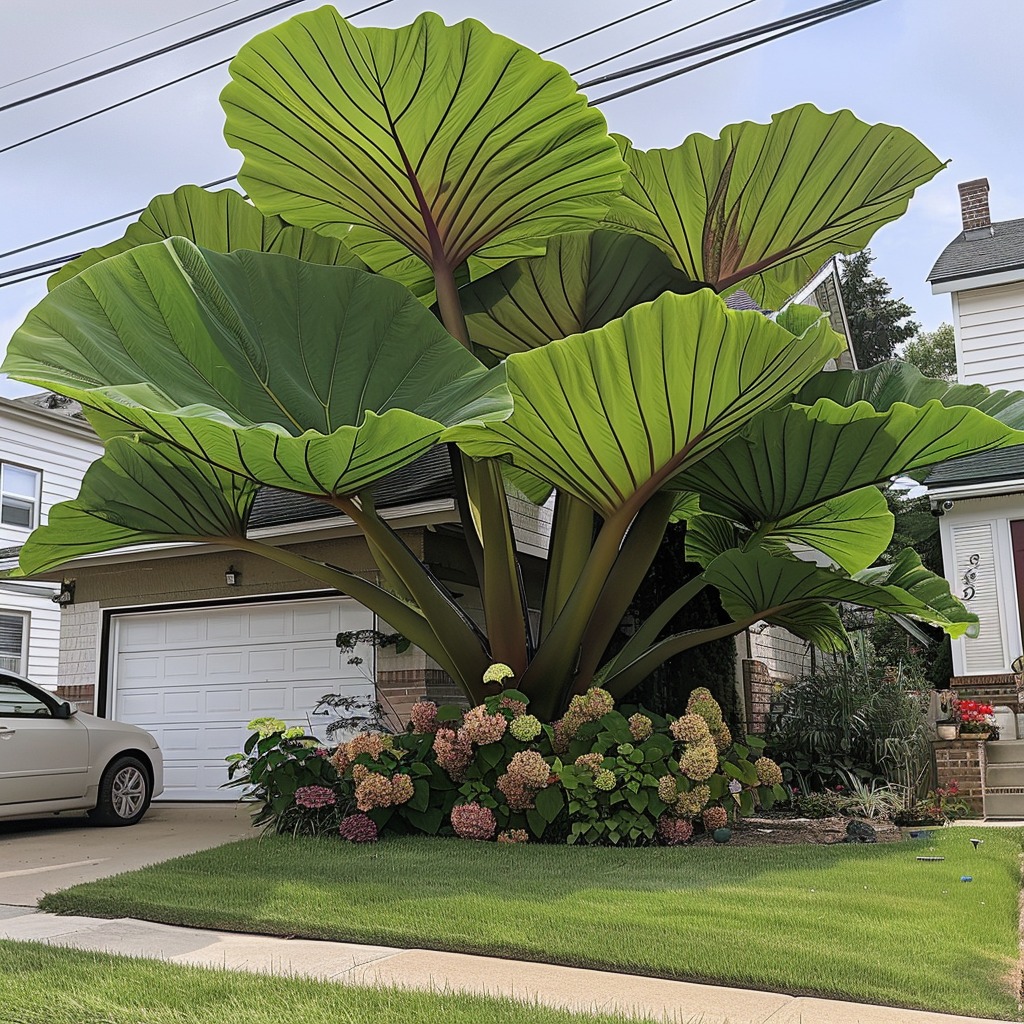
Light Requirements for Elephant Ear Plants
Understanding the light requirements of elephant ear plants is crucial for their optimal growth and development. While these tropical beauties are adaptable to various light conditions, providing the right amount of light can make the difference between a thriving, lush plant and one that struggles to survive.
Natural Light Considerations
Elephant ear plants generally prefer bright, indirect light. In their natural habitat, they often grow beneath the canopy of taller trees, receiving dappled sunlight throughout the day. This preference translates to both outdoor and indoor cultivation.
Outdoors, the ideal location for elephant ears is one that receives morning sun and afternoon shade. This light pattern provides the plant with enough energy for robust growth while protecting it from the harsh midday sun that can scorch its leaves. In regions with intense summer heat, providing more shade throughout the day may be necessary to prevent leaf burn.
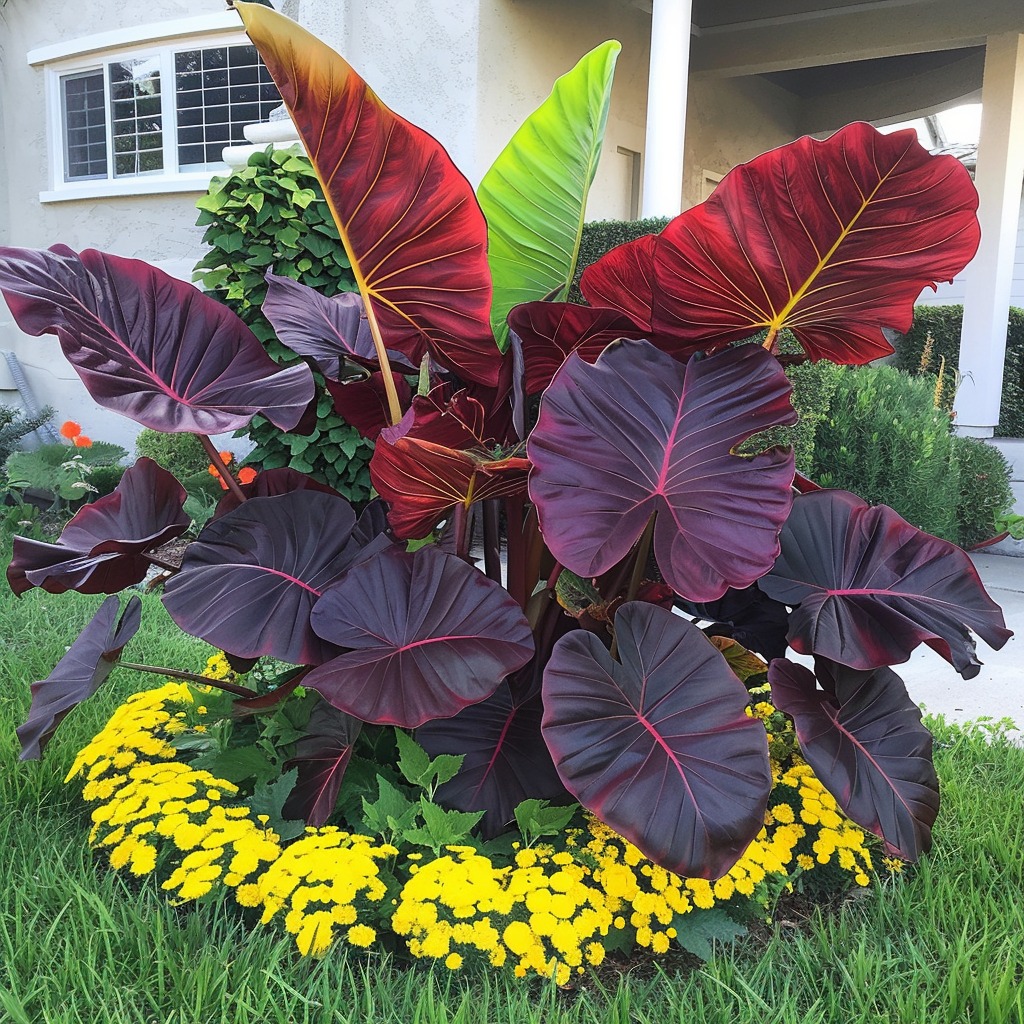
For indoor elephant ears, place them near a bright window but out of direct sunlight. East-facing windows are often ideal, providing gentle morning light. North-facing windows can also work well, especially for varieties that tolerate lower light conditions. If you only have south or west-facing windows available, use sheer curtains or blinds to filter the intense afternoon light.
Artificial Lighting Solutions
In situations where natural light is limited, such as in offices or rooms with few windows, artificial lighting can be used to supplement or even replace natural light for elephant ear plants.
When using grow lights, aim for a combination of cool and warm light to provide a full spectrum that mimics natural sunlight. LED grow lights are energy-efficient and can be adjusted to provide the right intensity and duration of light. Position the lights about 6-12 inches above the plant and provide 12-14 hours of light per day.
For larger elephant ear plants, you may need to use multiple lights or adjustable fixtures to ensure even coverage. Remember to adjust the height of the lights as your plant grows to maintain the optimal distance.
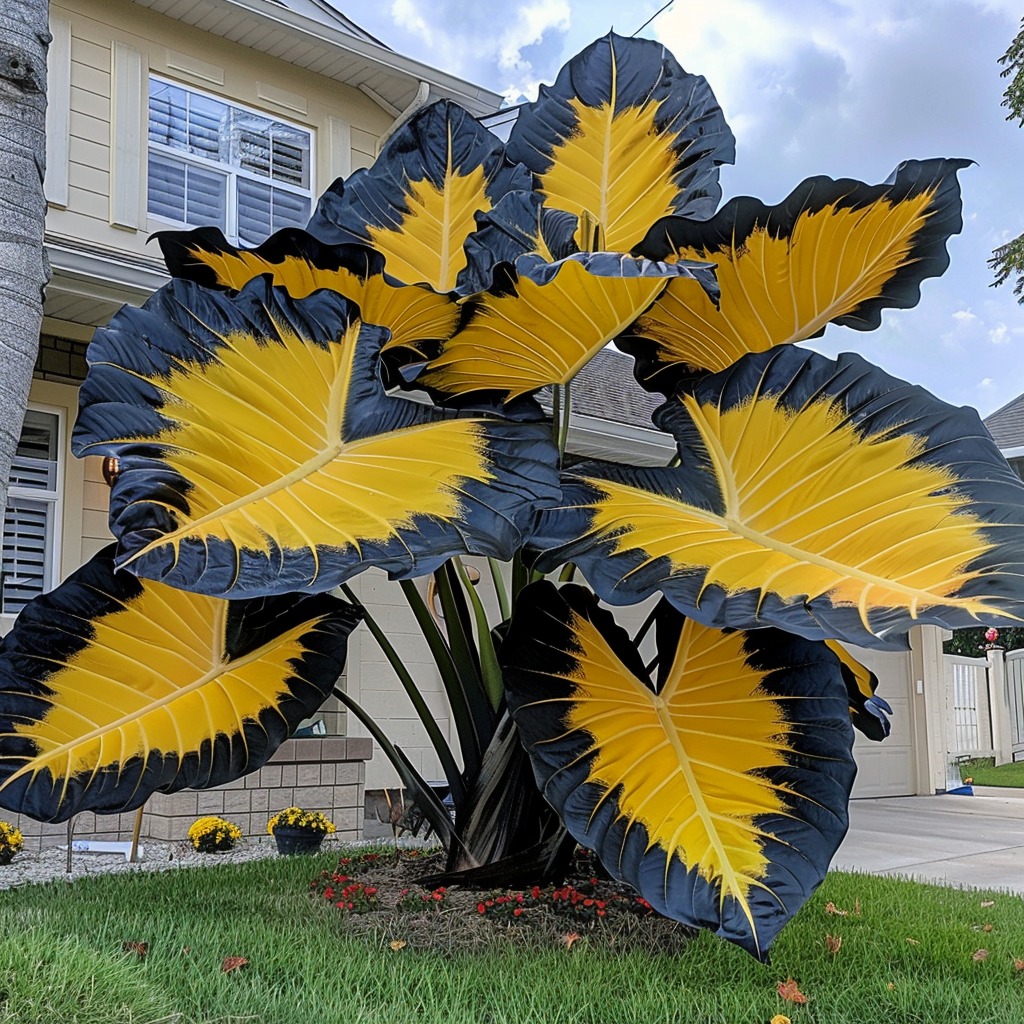
Soil Requirements for Elephant Ear Plants
The right soil composition is fundamental to the health and vigor of elephant ear plants. These tropical beauties have specific soil needs that, when met, allow them to reach their full potential in terms of growth and leaf production. Let’s explore the ideal soil conditions for elephant ears and how to achieve them in various growing environments.
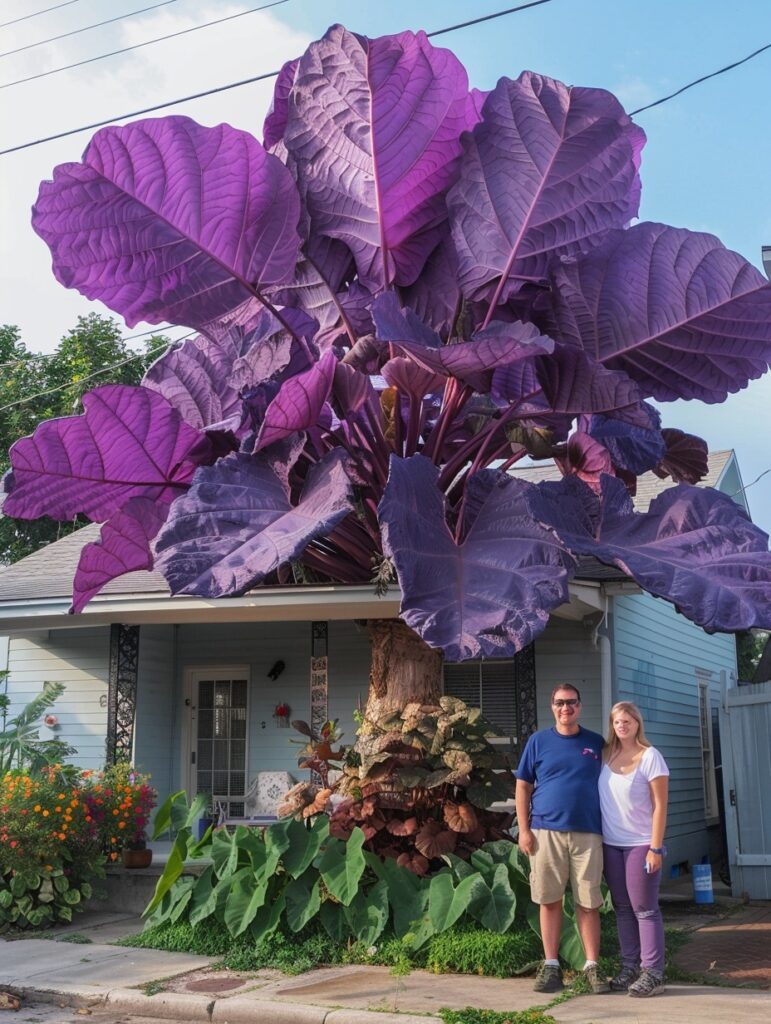
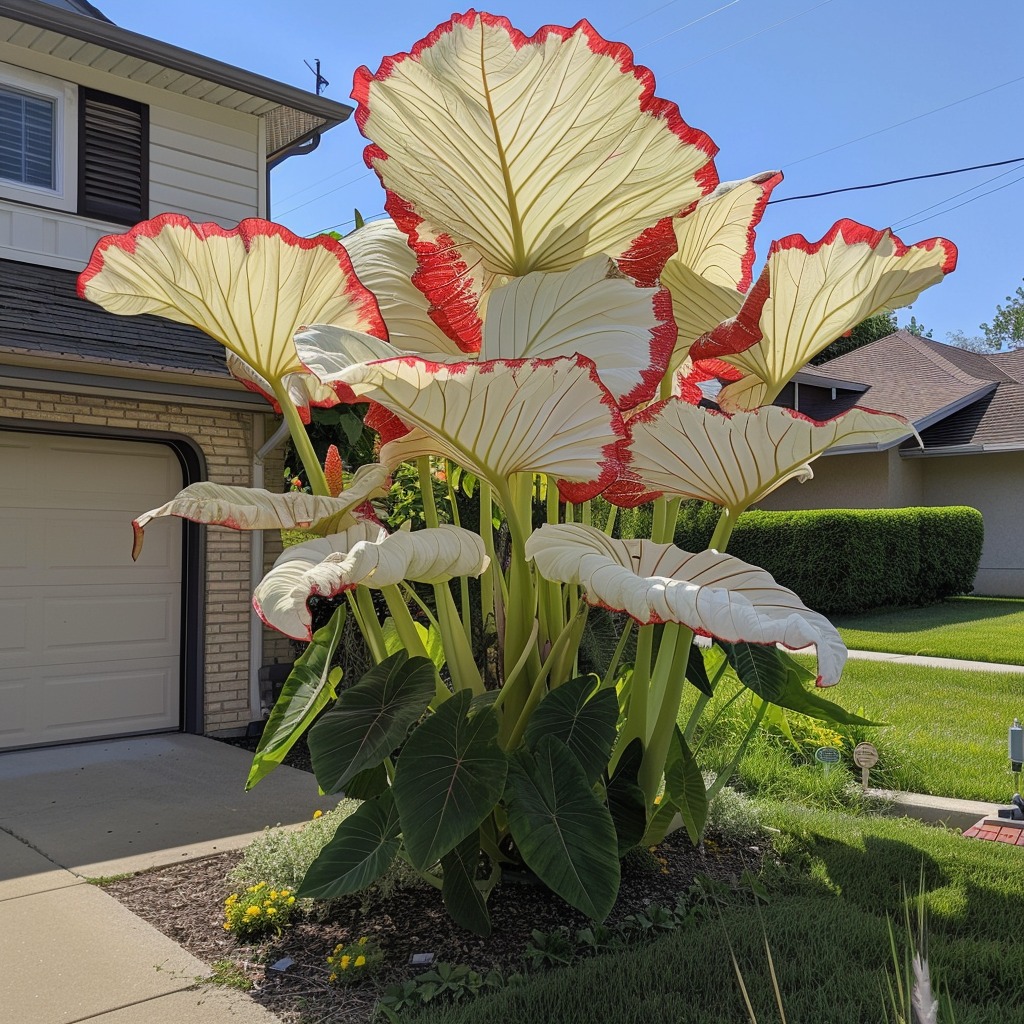
For container-grown elephant ears, use a high-quality potting mix formulated for tropical plants. You can further customize this by adding extra perlite for drainage or coconut coir for moisture retention, depending on your specific growing conditions.
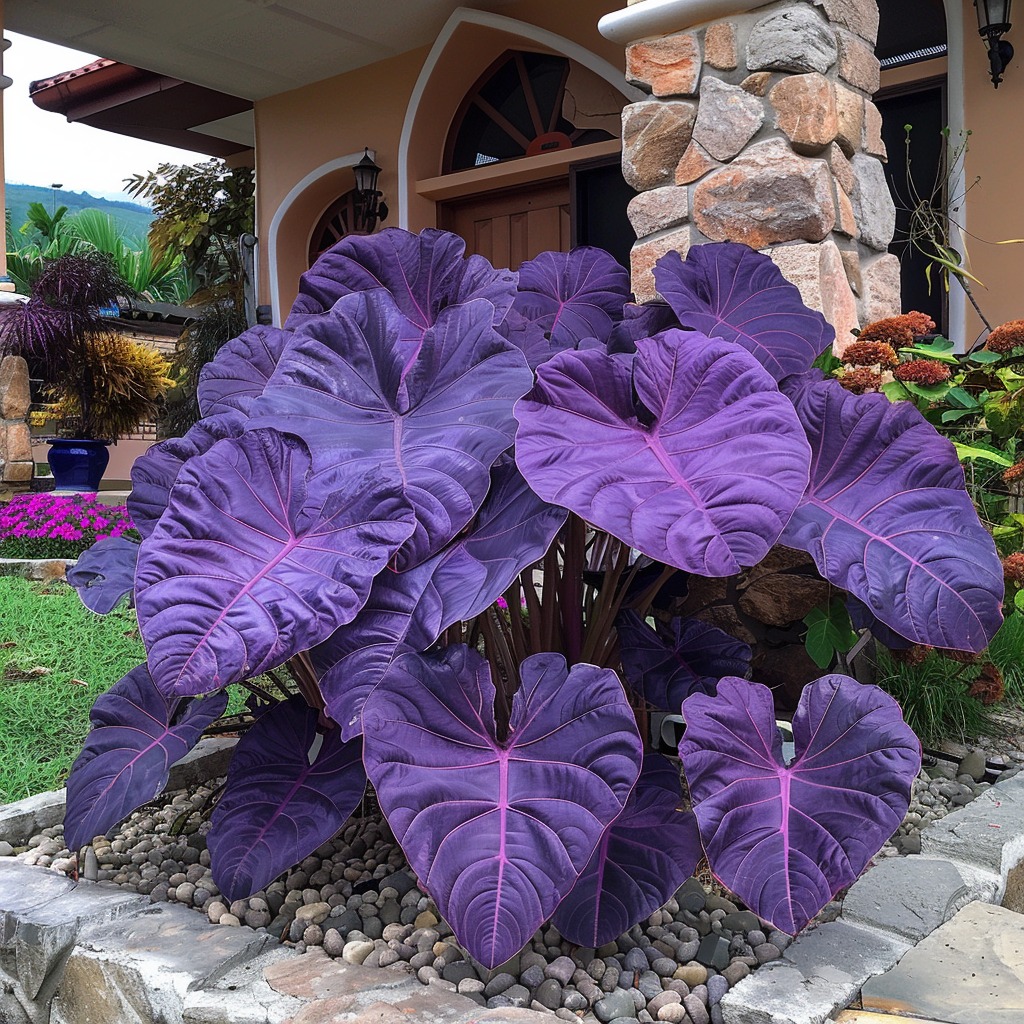
For container plants, ensure pots have adequate drainage holes. Place a layer of gravel or broken pottery shards at the bottom of the pot before adding soil to further improve drainage.
By providing the right soil conditions, you’ll create a strong foundation for healthy, thriving elephant ear plants that will be the envy of any garden or indoor space.
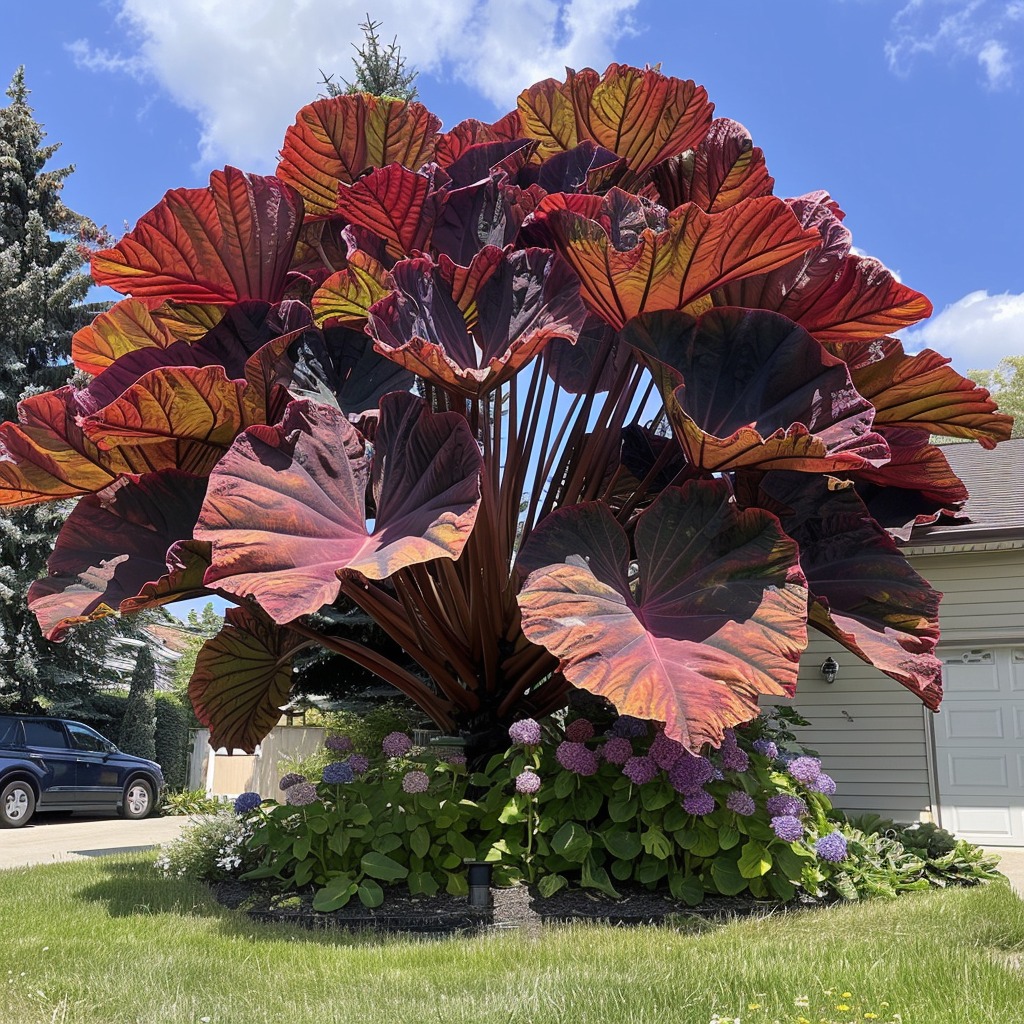
For container-grown plants:
- Water more frequently, as pots tend to dry out faster than in-ground soil.
- During peak growing season, you may need to water daily, especially if the pot is in a sunny location.
- Always check the soil moisture before watering – if the top inch of soil feels dry, it’s time to water.
When watering, aim to moisten the entire root zone. Water slowly and deeply, allowing the water to penetrate the soil rather than running off the surface. This encourages deep root growth, which makes the plant more resilient to drought stress.
Humidity and Misting
In addition to soil moisture, elephant ears benefit from high humidity levels. In their natural habitat, these plants are accustomed to humid, tropical conditions. Replicating this environment can significantly enhance their growth and leaf quality.
For indoor plants:
- Use a humidifier to increase ambient moisture levels.
- Place the pot on a tray filled with pebbles and water, ensuring the pot bottom doesn’t sit directly in the water.
- Mist the leaves regularly, especially during dry winter months when indoor heating can reduce humidity.
Outdoor plants generally receive sufficient humidity from the environment, but in arid climates, you may need to mist the leaves or use overhead sprinklers to increase humidity levels.
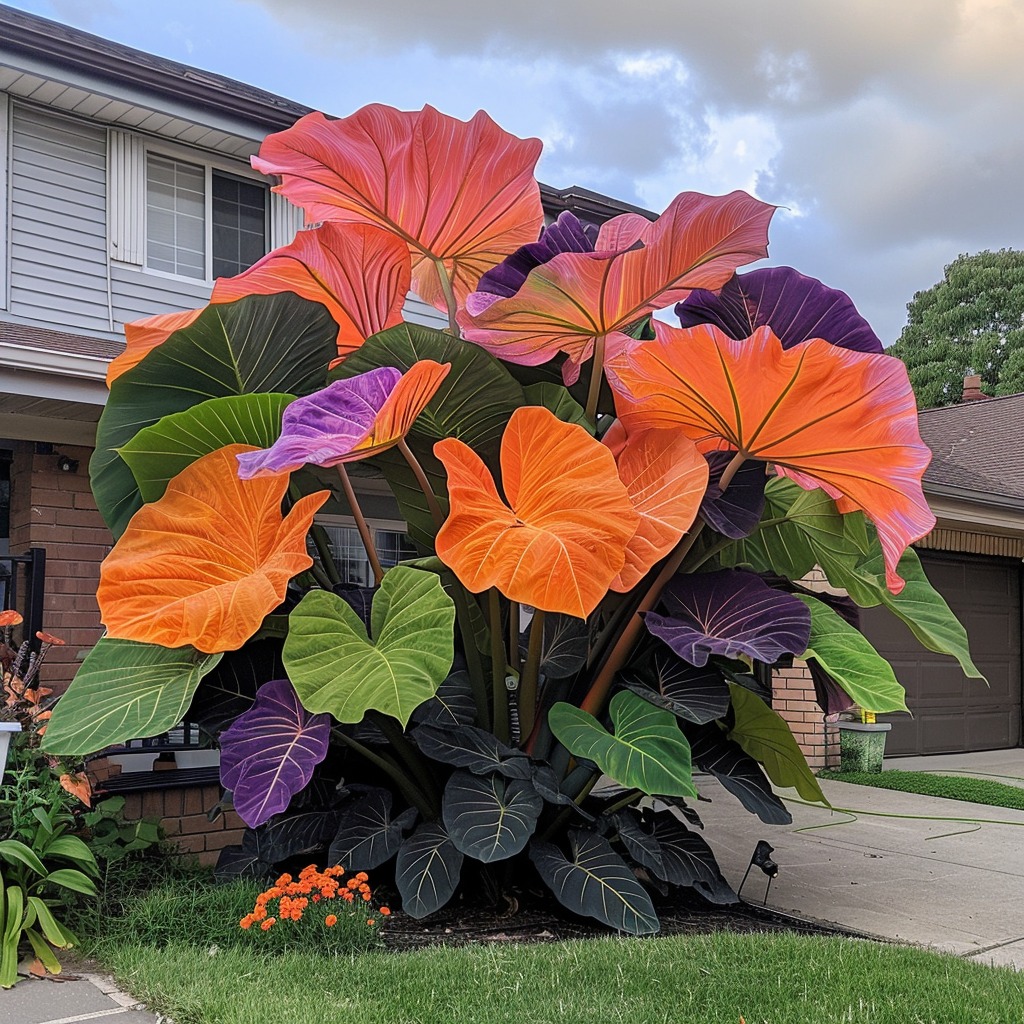
Water Quality and Temperature
The quality and temperature of the water you use can impact the health of your elephant ear plants. These tropical plants are sensitive to chemicals commonly found in tap water, such as chlorine and fluoride.
If possible, use rainwater or distilled water for your elephant ears. If using tap water, allow it to sit out overnight to allow chlorine to dissipate. Avoid using softened water, as the high sodium content can be harmful to the plants.
Water temperature is also a consideration. Use room temperature or slightly warm water, especially for indoor plants. Cold water can shock the roots and slow growth.
By meeting the water requirements of your elephant ear plants, you’ll create the lush, tropical oasis these magnificent plants are known for, whether in your garden or your living room.
Temperature and Humidity Requirements for Elephant Ear Plants
Elephant ear plants, with their tropical origins, have specific temperature and humidity needs that are crucial for their optimal growth and development. Understanding and meeting these requirements can make the difference between a thriving, lush plant and one that merely survives. Let’s delve into the ideal conditions for these exotic beauties and how to maintain them in various growing environments.
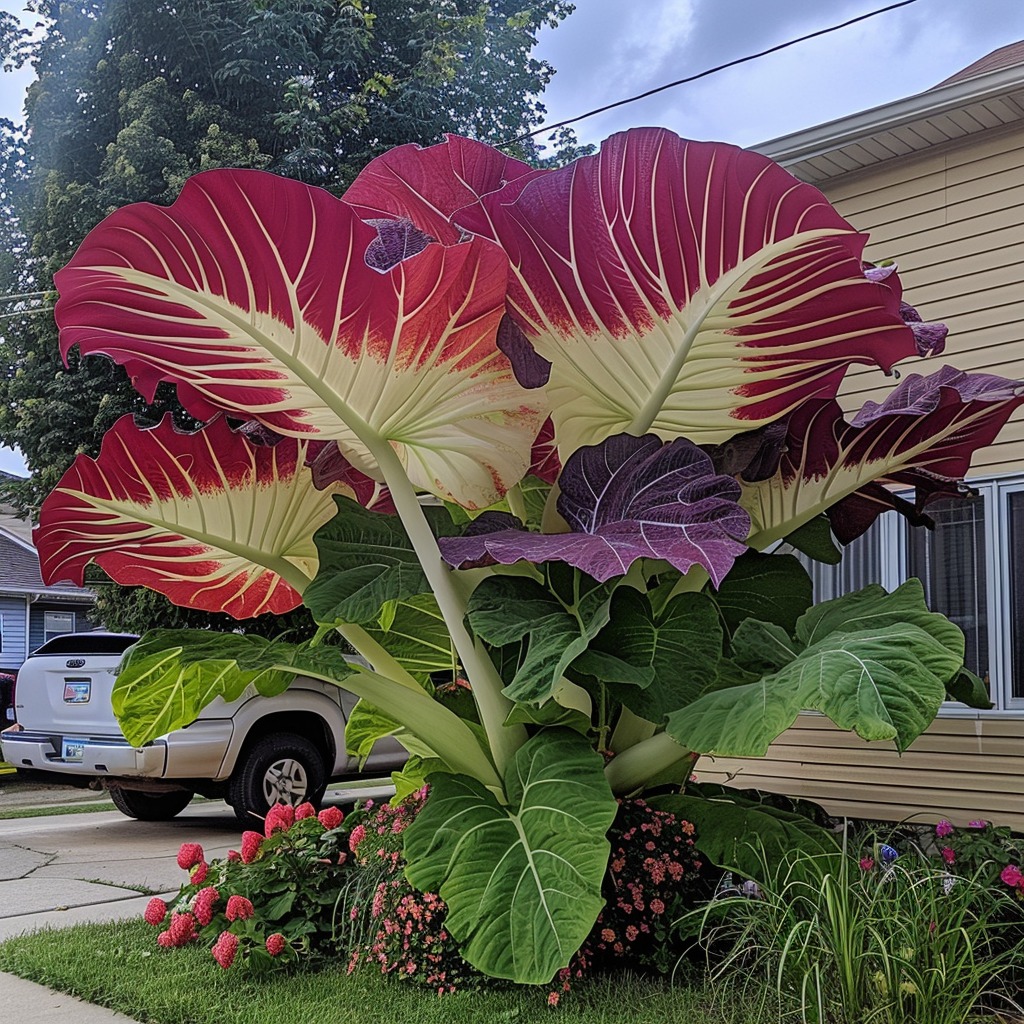
Seasonal Adjustments
As the seasons change, you may need to adjust your care routine to maintain optimal temperature and humidity conditions for your elephant ear plants.
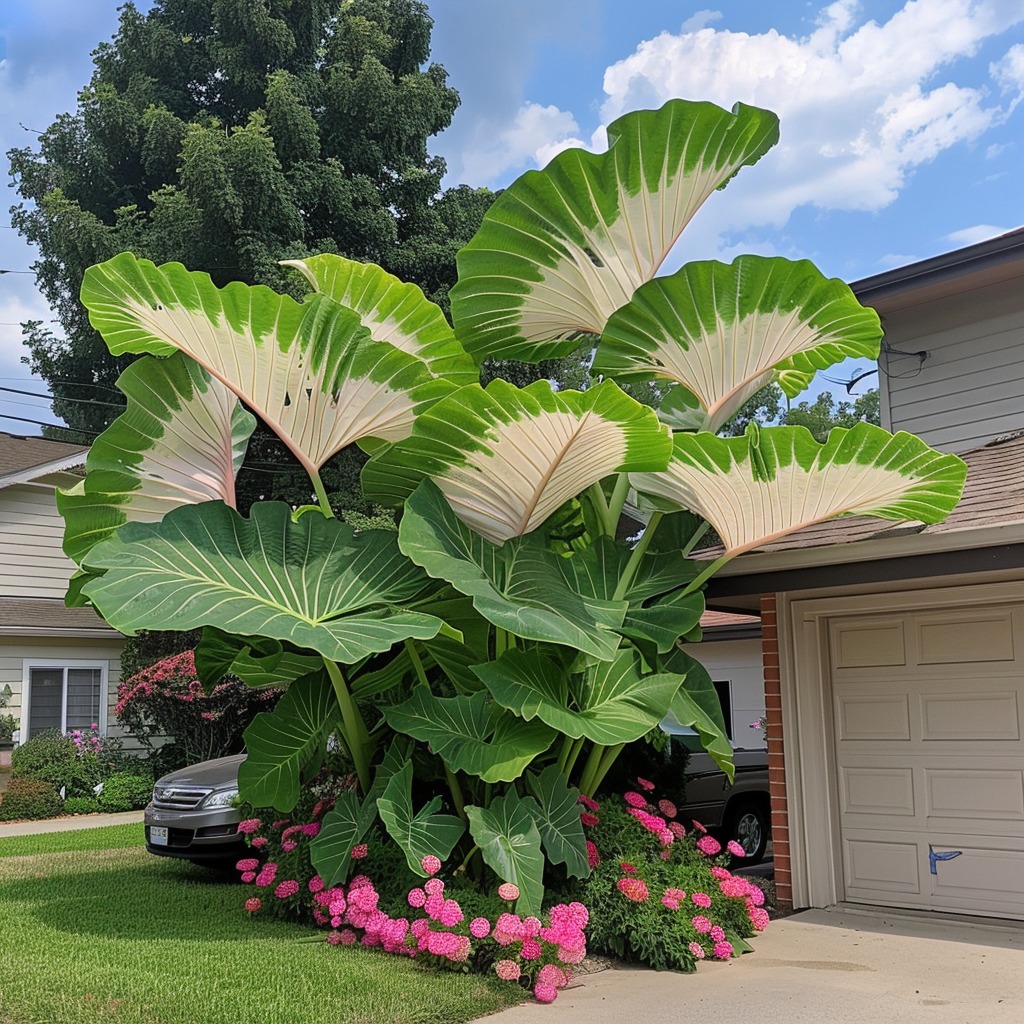
Fertilizer Requirements for Elephant Ear Plants
Elephant ear plants, with their rapid growth and large, lush foliage, are heavy feeders that require regular fertilization to reach their full potential. Providing the right nutrients in the correct amounts and at the proper times is crucial for maintaining healthy, vibrant plants. Let’s explore the fertilizer needs of elephant ears and how to meet them effectively.
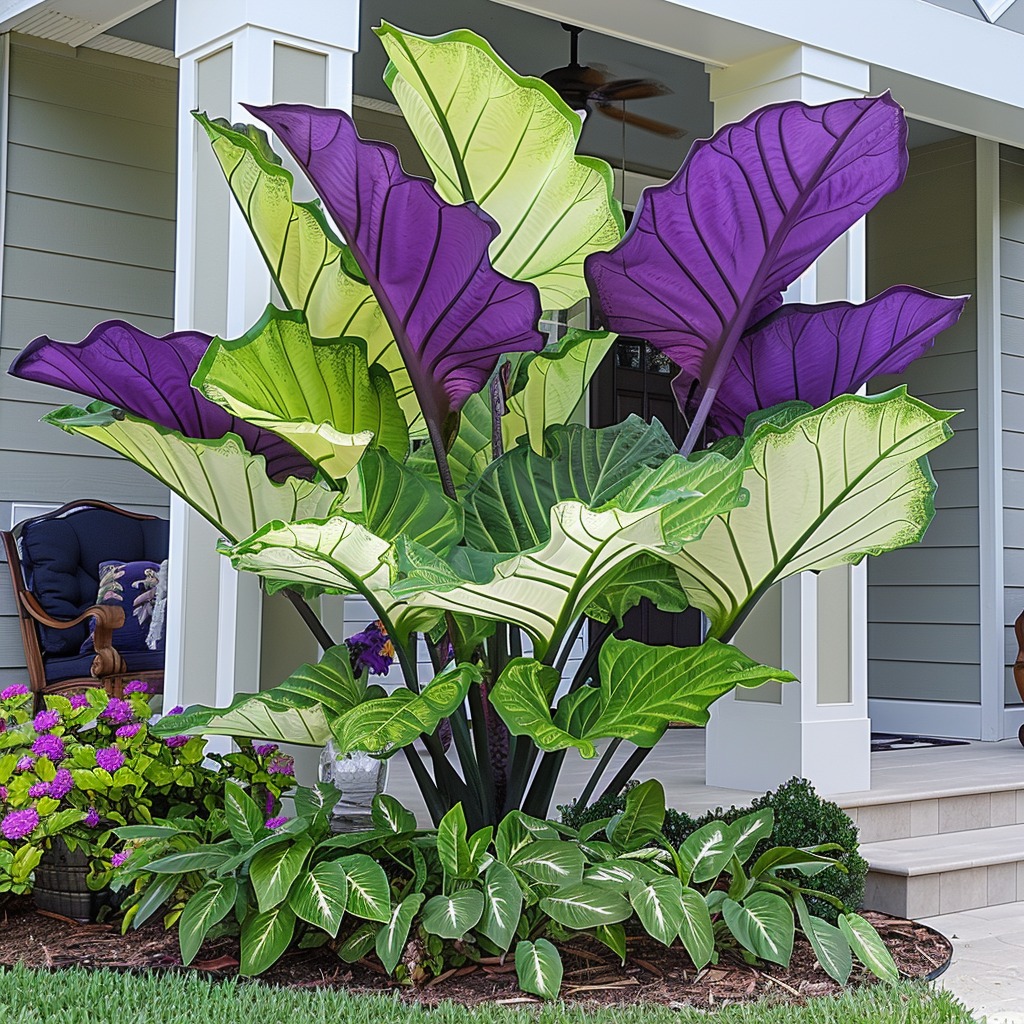
Types of Elephant Ears
Elephant ear plants encompass several striking species, each boasting unique characteristics and care requirements. The three most popular types—Colocasia, Alocasia, and Xanthosoma—offer a variety of sizes, colors, and textures that can enhance any garden or indoor setting. Let’s delve into these fascinating varieties.
